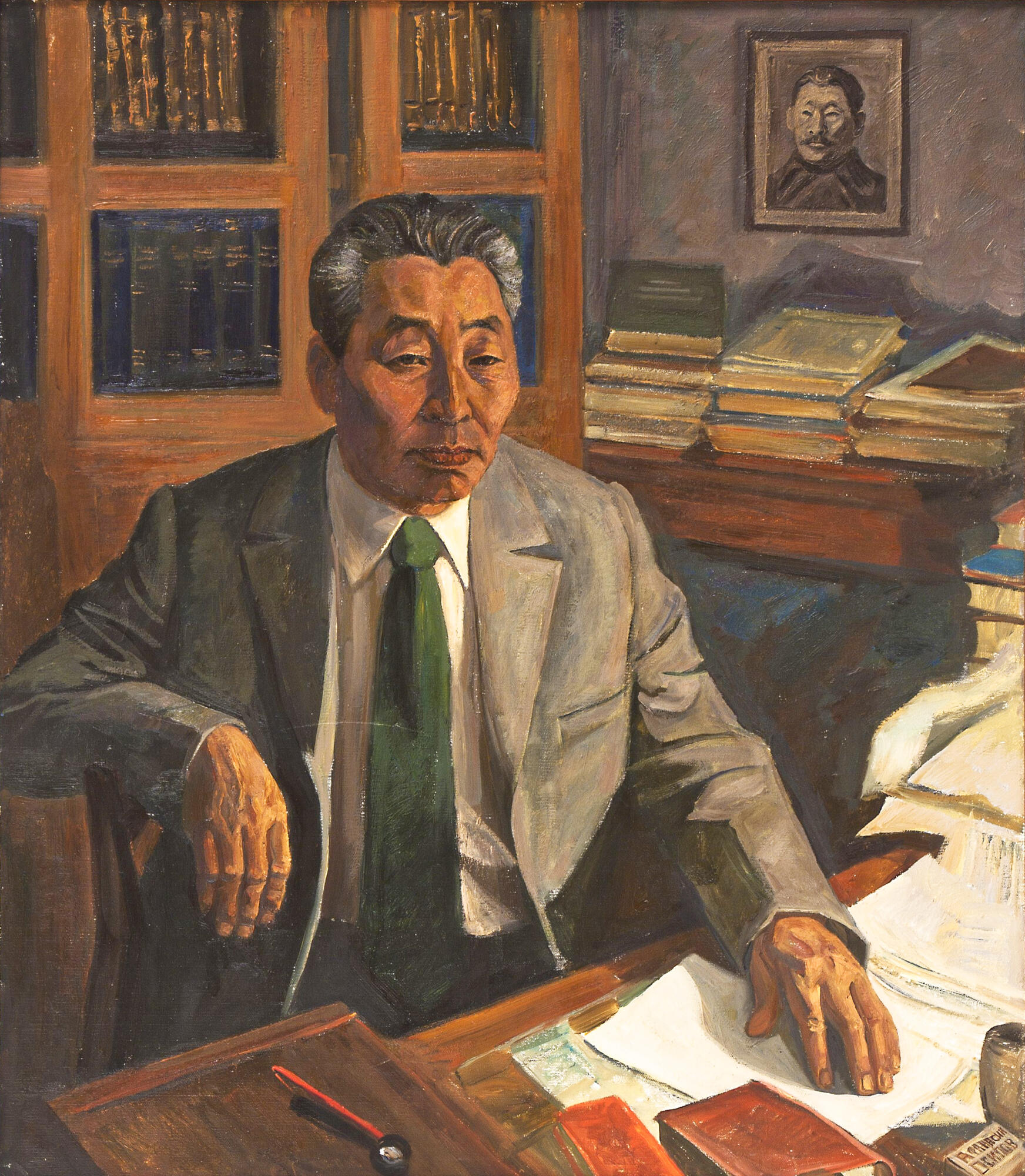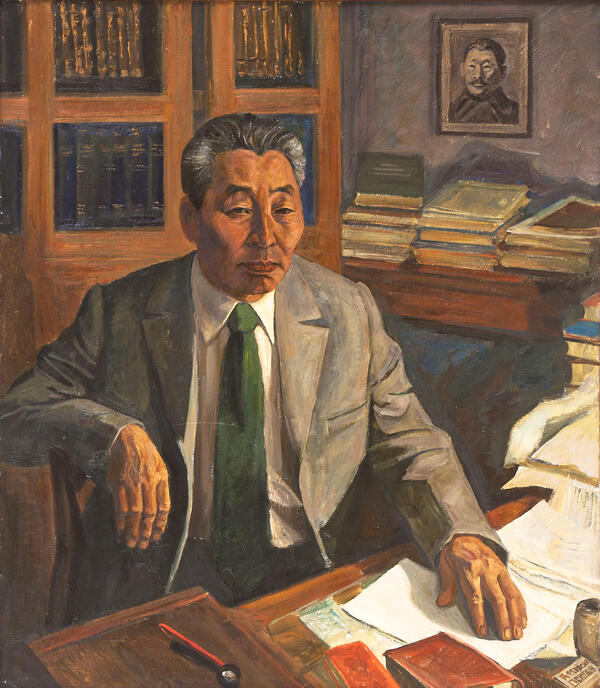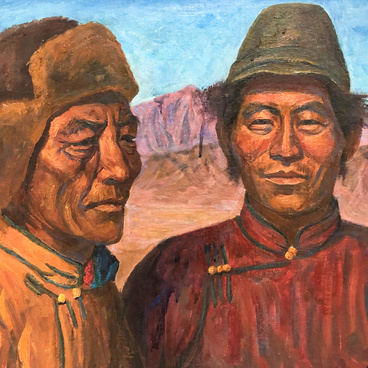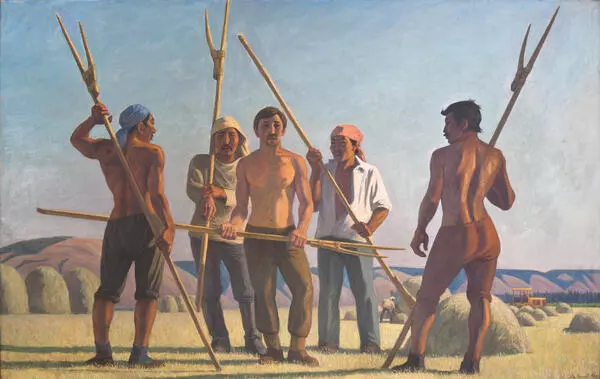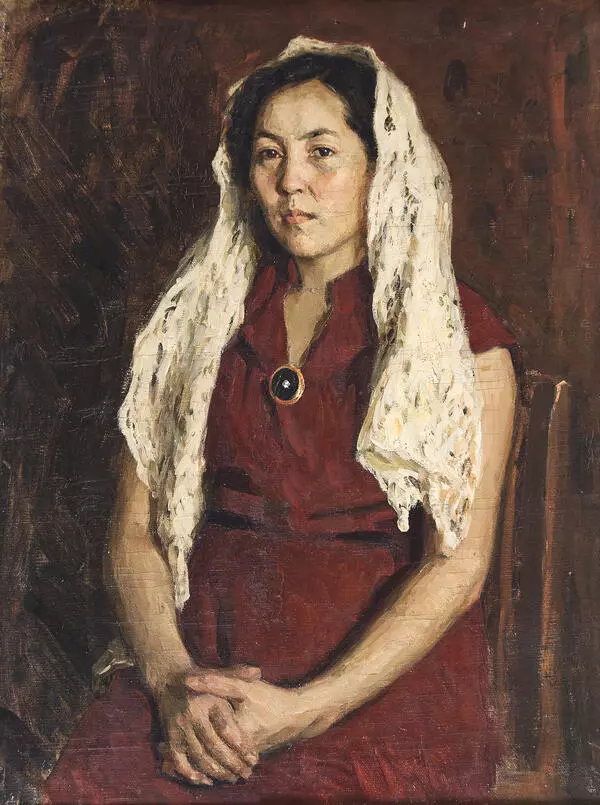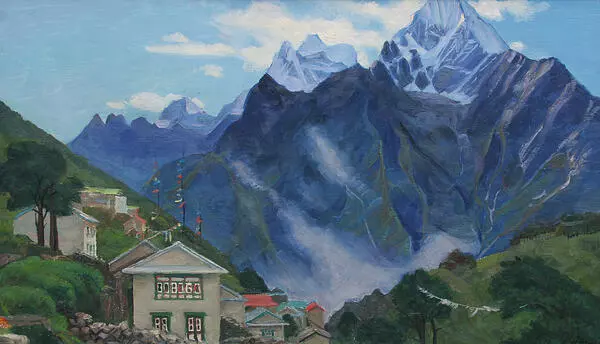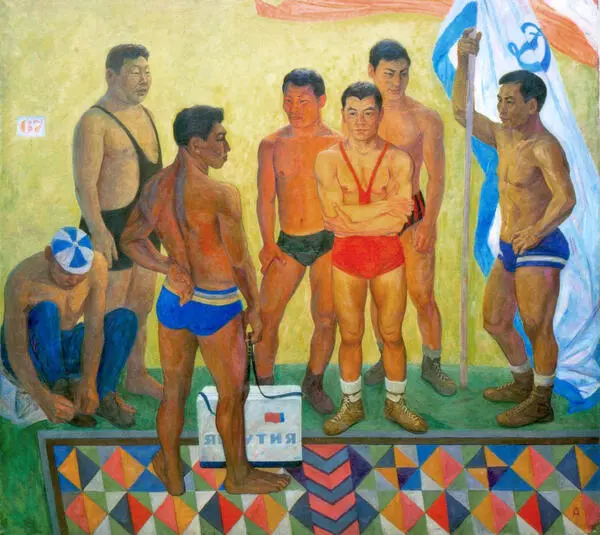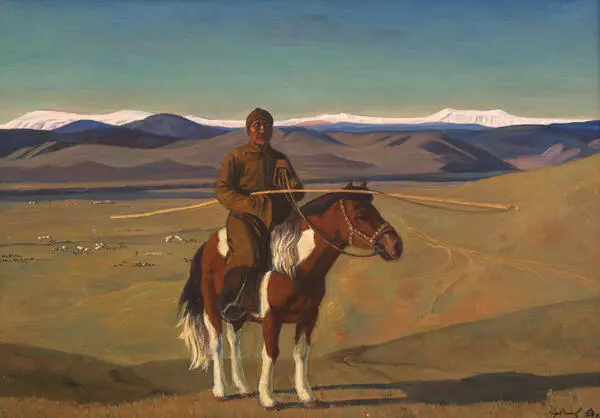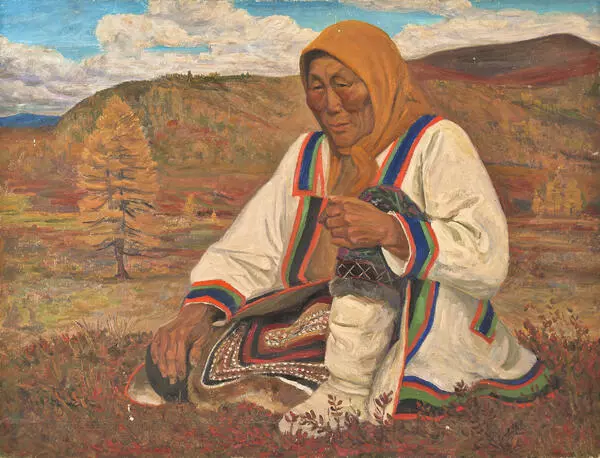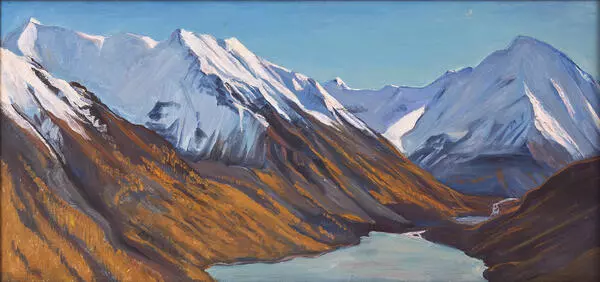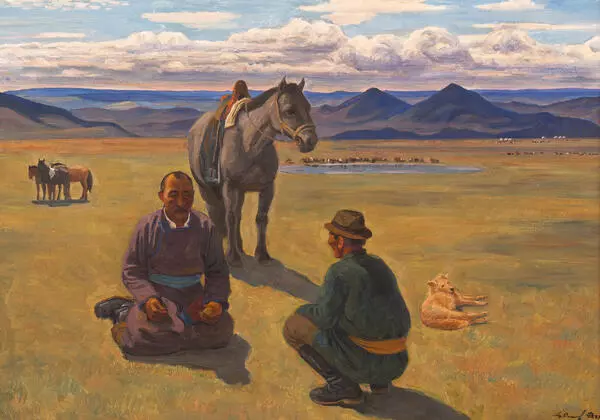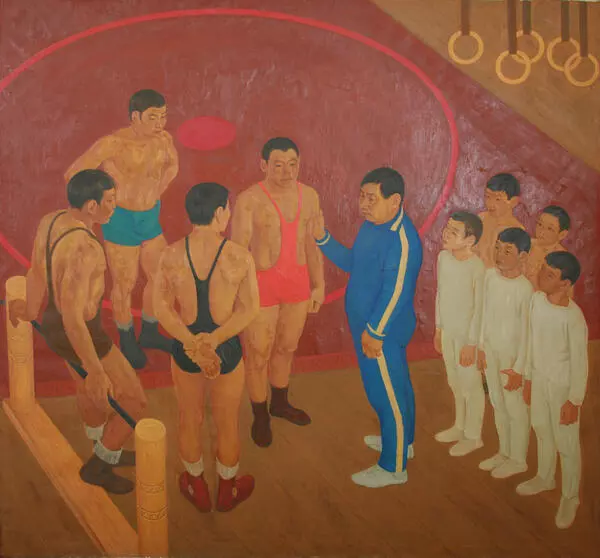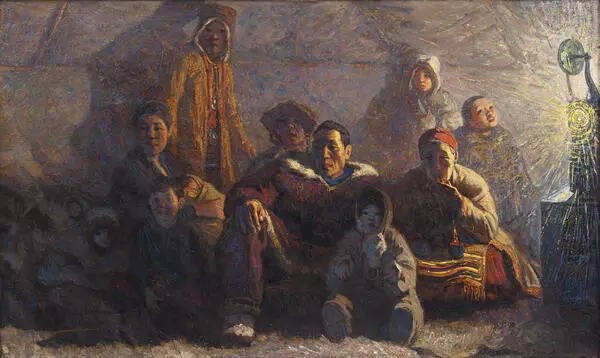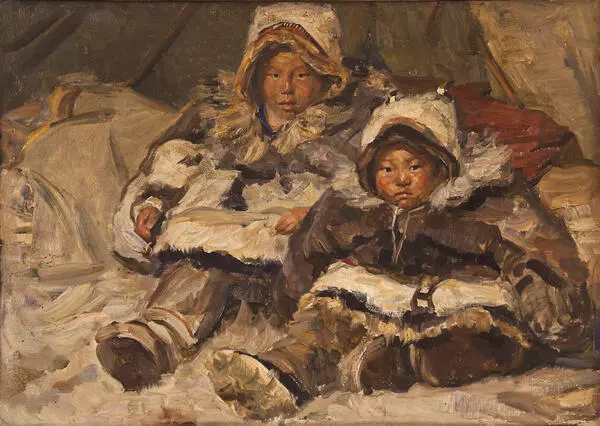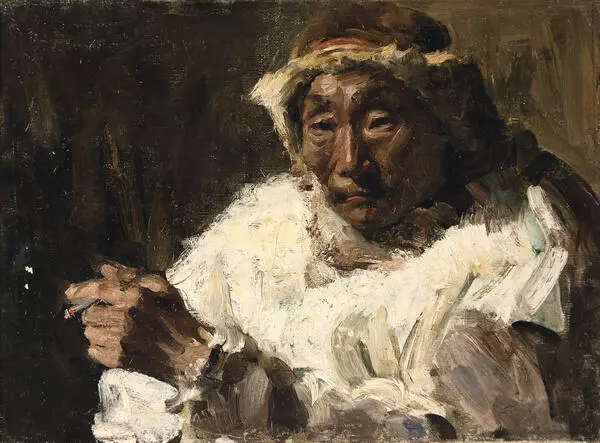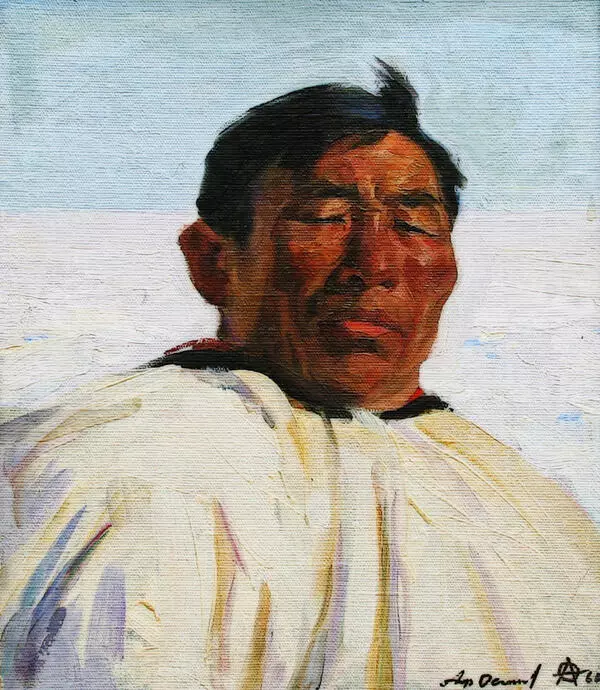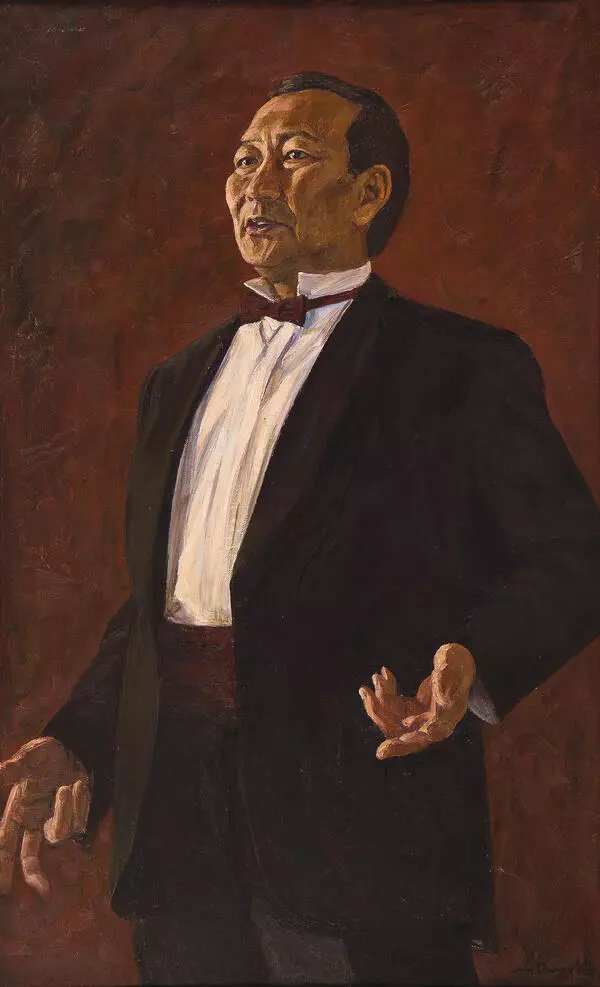Afanasy Osipov is a Yakut painter, academician of the Russian Academy of Arts, People’s Artist of the USSR, winner of the Ilya Repin State Prize of the Russian Federation. He was born in Gorny Ulus in Yakutia and studied painting in Moscow at the Moscow State Academic Art Institute named after V.I. Surikov. The artist participated in many all-union and foreign exhibitions. After returning to his homeland, Osipov taught at the Yakut art school, traveled a lot around the republic, for many years headed the Union of Artists of Yakutia, and organized exhibitions. He painted pictures of large construction sites in the republic, landscapes, as well as portraits of his countrymen, such as ordinary people and outstanding contemporaries.
Among his portrait works, there are strictly staged ones, where the faces of those depicted protrude from the dark background of the canvas, thus dominating the central field. Osipov began in line with this long-standing traditional line, which had a particularly large quantitative weight in the development of the Soviet pictorial portrait of the post-war decade. However, then the artist began to paint more intimate portraits, in which the characters appear to the viewer in everyday settings, in the office, or in the studio.
This canvas depicts the Yakut historian Georgy Prokopyevich Basharin. This scientist performed an unprecedented act of courage. He rehabilitated pre-revolutionary writers, such as Alexey Kulakovsky, Anempodist Sofronov, and Nikolay Neustroev. In 1952, George Basharin’s book ‘Three Yakut Realism Enlighteners’ was published, after which the persecution of the historian began. Having been removed from his posts and deprived of academic degrees, Georgy Basharin was persecuted for several years, but under the conditions of Khrushchev’s liberalization, the scientist managed to return to the research team and, moreover, defended his doctoral thesis for the second time. The researcher and teacher wrote 527 scientific papers, including 19 monographs. He studied issues that form the foundation of scientific knowledge about the Yakuts, such as the origin of the people, their social system, literary heritage, the history of agrarian relations and agricultural development of Yakutia, the entry of Yakutia into the Russian state, and its historical consequences. Under his editorship, textbooks and manuals on the history of Yakutia were developed for schools and universities of the republic.
Among his portrait works, there are strictly staged ones, where the faces of those depicted protrude from the dark background of the canvas, thus dominating the central field. Osipov began in line with this long-standing traditional line, which had a particularly large quantitative weight in the development of the Soviet pictorial portrait of the post-war decade. However, then the artist began to paint more intimate portraits, in which the characters appear to the viewer in everyday settings, in the office, or in the studio.
This canvas depicts the Yakut historian Georgy Prokopyevich Basharin. This scientist performed an unprecedented act of courage. He rehabilitated pre-revolutionary writers, such as Alexey Kulakovsky, Anempodist Sofronov, and Nikolay Neustroev. In 1952, George Basharin’s book ‘Three Yakut Realism Enlighteners’ was published, after which the persecution of the historian began. Having been removed from his posts and deprived of academic degrees, Georgy Basharin was persecuted for several years, but under the conditions of Khrushchev’s liberalization, the scientist managed to return to the research team and, moreover, defended his doctoral thesis for the second time. The researcher and teacher wrote 527 scientific papers, including 19 monographs. He studied issues that form the foundation of scientific knowledge about the Yakuts, such as the origin of the people, their social system, literary heritage, the history of agrarian relations and agricultural development of Yakutia, the entry of Yakutia into the Russian state, and its historical consequences. Under his editorship, textbooks and manuals on the history of Yakutia were developed for schools and universities of the republic.
